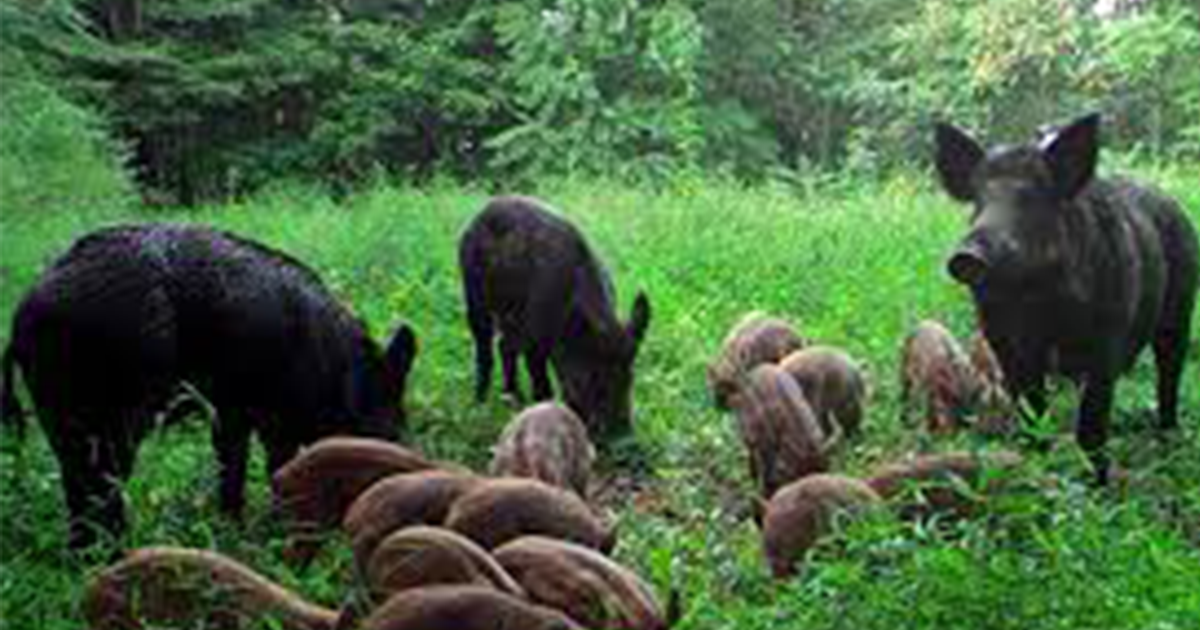Buena Vista, GA
While feral swine might not have the same notoriety as some of the other invasive species here in Georgia, few have reeked more havoc over the past decade. That damage isn’t just limited to the economy, as they also put a massive strain on the environment.
“According to some surveys done by the University of Georgia in 2015, feral swine are responsible for approximately a hundred million dollars just in agricultural damage in the state of Georgia alone,” says Matt Ondovchik, Feral Swine Coordinator for APHIS. “Above and beyond that, when you tie in all the natural resource damage; water quality issues, threatening endangered species, you can tack on about another fifty million dollars to that. So, it’s a hundred and fifty million dollars problem. Keep in mind, that’s an eight-year-old number now. So, I’m certain that some of those have increased over time. Beyond that, how do you put a dollar value on water quality? How do you put a dollar value on a threatened endangered species loss? There’s a lot of caveats to that number that are probably not representative.”
With feral swine having such a huge impact on a number of different levels, USDA Wildlife Services brought together several agencies for an event designed to inform the public about all the potential risks and some of the control options available.
“At a workshop like this, you’ve got the University of Georgia, the Georgia Department of Agriculture, the Georgia Association of Conservation Districts, USDA, Georgia DNR; you’ve got multiple entities all out here preaching the same message and working together to educate landowners on effective control techniques and allowing people to feel like they can make a difference and have an influence on the problems they’re dealing with,” says Ondovchik.
While there are a few different ways in dealing with this type of problem, such as repellants and shooting, there is one method that is recommended above the rest.
“Large corral style trapping, in our opinion, is the most effective control technique we have available at this time,” says Ondovchik. “There’s certain characteristics; you want to build a large enough trap to hold a large number of pigs. Pigs travel in large groups or sounders if you will, secondly, you want to build that trap strong enough to hold a group of twenty angry caught pigs. There are some characteristics with the panels. We recommend a minimum height of sixty inches. It’s surprising to a lot of people, but pigs are pretty decent athletes and anything less that, you will lose some pigs where they will jump over top of it.”
With feral hogs being the most reproductively capable large mammals in North America, capturing the entire group is a must, which is why picking a method and sticking with it is so vital.
“If you’re going to go down the avenue of trying to utilize trapping on your property, it’s highly recommended that that be the only control technique you utilize. I’m never going to take a farmer’s ability or right to carry a rifle behind their seat and shoot pigs. However, as long as those pigs are pressured, whether it’s dog hunting, recreational sport hunting, thermal shooting; those pigs are constantly on the run. You’re not going to have success getting those pigs to relax enough to remove that apprehension where they will go inside that trap allowing you to have success in removing that entire family group,” says Ondovchik.
By: Damon Jones

